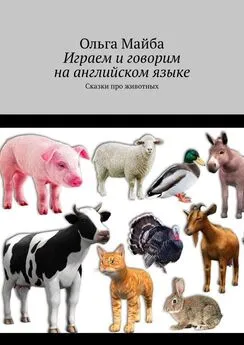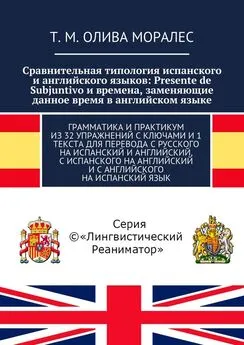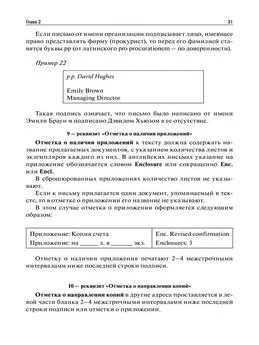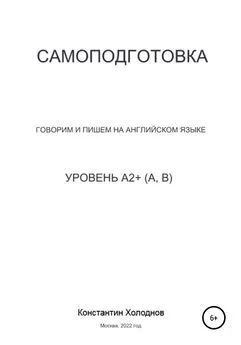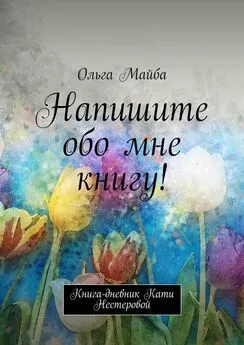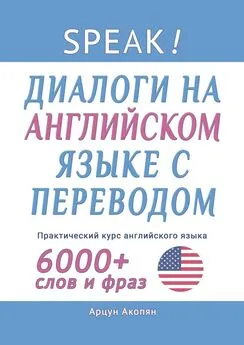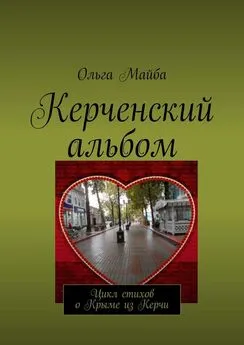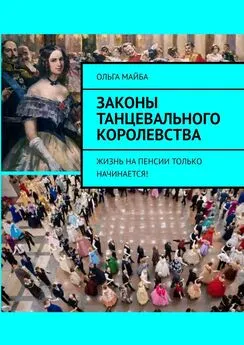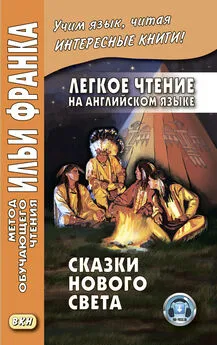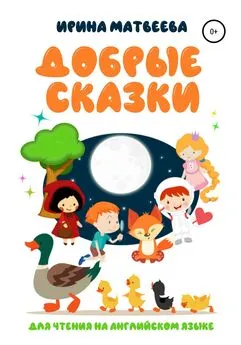Ольга Майба - Играем и говорим на английском языке. Сказки про животных
- Название:Играем и говорим на английском языке. Сказки про животных
- Автор:
- Жанр:
- Издательство:неизвестно
- Год:неизвестен
- ISBN:9785449855299
- Рейтинг:
- Избранное:Добавить в избранное
-
Отзывы:
-
Ваша оценка:
Ольга Майба - Играем и говорим на английском языке. Сказки про животных краткое содержание
Играем и говорим на английском языке. Сказки про животных - читать онлайн бесплатно ознакомительный отрывок
Интервал:
Закладка:
Играем и говорим на английском языке
Сказки про животных
Ольга Майба
© Ольга Майба, 2020
ISBN 978-5-4498-5529-9
Создано в интеллектуальной издательской системе Ridero
Предисловие автора
Уважаемые родители и учителя!
Это КНИГА УРОКОВ И СКАЗОК на АНГЛИЙСКОМ ЯЗЫКЕ поможет вам научить ваших детей говорить по-английски, просто ИГРАЯ с ними. Приобретите несколько комплектов пластмассовых животных: «Дикие животные», «Домашние животные», «Детеныши» и можете начинать.
Садитесь или ложитесь на ковёр, кладите перед собой эту книгу, читайте, сразу переводите ребёнку, а он будет двигать эти игрушки, и играя, повторять слова и фразы, отвечать на вопросы.
Пособие построено таким образом, что ребёнку необходимо повторять фразы около 10 раз. После каждого урока меняйтесь ролями, рисуйте, смейтесь и шутите, ведь так забавно играть в игрушки. Каждый урок можно проводить по 2 раза для лучшего понимания материала.
Удачи вам!
Introduction
Для первой игры нам понадобится лист бумаги, фломастеры и пластиковые животные. Мы нарисуем клетки для зверей, и будем играть в зоопарк.
Я говорю фразу на английском языке, затем на русском.
Иногда сопровождаю слова жестами и мимикой, например, при слове ”will” показываю рукой вперед, при слове «all the animals» делаю круговое движение рукой над ними. «To speak» – показать на рот, «to write» – показать, что пишу, «to read» – показать открытые ладони и т. д. О больших и сильных зверях говорю грубым голосом, а о маленьких – тихим, тонким. Придумайте свои жесты и знаки для легкого запоминания слов и выражений.
– Good morning, children. My name is Olga. I am an English teacher. I will teach you to speak, to read and to write in English. We will play with different toys and learn many interesting things. Are you ready? Let’s play!
How many toys you have! I see a lot of plastic animals. There is a tiger, a lion, a zebra, a leopard, a hare and others. Our game is called «The Zoo».
Наша игра называется «Зоопарк». Возьмём большой лист бумаги и нарисуем клетки для животных.
Let’s draw the cages for all the animals. It will be the Zoo. How good you drew! There are a lot of cages on the sheet of paper. Good for you! We will sit on the carpet and play with the toys.
Let’s start.
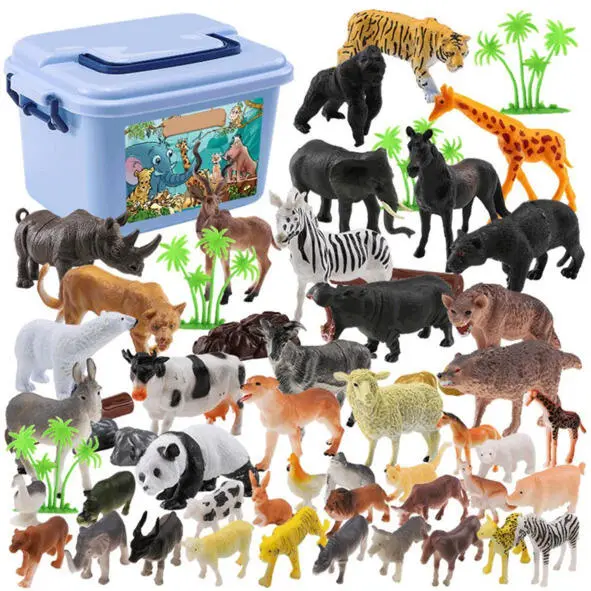
In the Zoo (1)
(A teacher shows a picture.)
– Children, this is the Zoo. What is this?
– The Zoo.
– There are many animals in the Zoo. Look here. There is a tiger, a lion, an elephant, a zebra, a rabbit and others on the picture. Показать каждое животное несколько раз, назвать его на английском языке и русском.
– Давайте сядем на ковёр, и будем играть в зоопарк.
Our Zoo is on the floor. Let s play. We drew the cages, and we will put the animals in them. Начертим на листе ватмана 12 клеток и пронумеруем их. Повторим цифры на английском языке и покажем их.
– Victoria, take a zebra and put it in the cage number 1. (She did it.) Good for you! Take a lion and put it in the cage number two. Take an elephant and put it in the cage number three. (We put all the animals by the same way in different cages.)
– Victoria, where is a tiger?
– It is in the cage number four.
– Good for you! Where is a lion?
– Here it is. It is in the cage number one.
– No, it is not. It is in the cage number two. Is it right?
– Yes, it is.
(I may ask her about all animals by the same way.)
– You are very capable. You know all names of the animals. You may play by yourselves and name
all of them. See you later. Good bye.
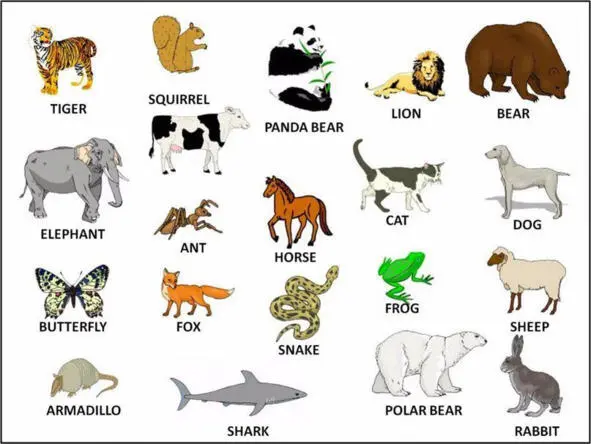
We sing the son (2)
Children, you know some names of the animals. I know a song about the Zoo. Listen to me.
I can see a zebra,
you can see it too.
I can see on the picture,
You can see in the Zoo.
– Let’s sing together. (They are singing now.)
– Victoria, do you see a hare in the Zoo?
– Yes, I do.
– Can you sing about it? I will help you. Do not be afraid.
I can see a hare, (a bear, an elephant, a fox, a wolf and others.)
You can see it too.
I can see on the picture,
You can see in the Zoo.
– Excellently! Who wants to sing about animais?
(We may sing this song a lot of times, so children will know all the names of the animals.)
2. Our animals are in the Zoo. Victoria, show me a tiger, please.
(The teacher asks where all the animals are. A child shows toys and names them. Do not forget to praise him.)
– How do you think, what do the animals do in the Zoo?
– (Children answer.)
The animals begin to greet each other. A beast terns to another beast and asks them.
– How do you do. I’m a monkey. What are you?
– How do you do. I’m a lion. What are you?
(Every animal greets each other.)
– Glad to see you.
(Children learn to greet somebody at first time and repeat some new words.
It takes about 15 minute.)
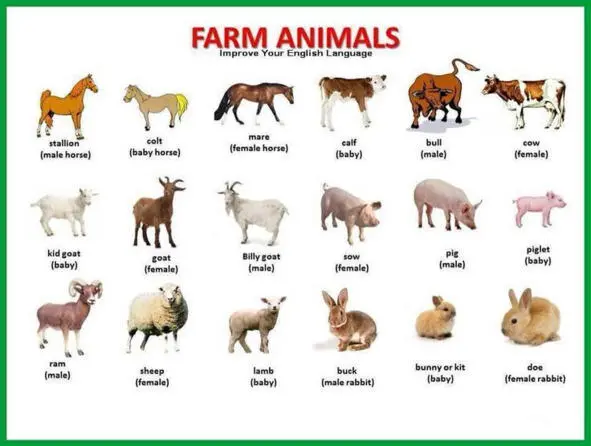
The game «Where is a bird?» (3)
Для игры понадобится лестница из кубиков, птичка, лист бумаги и разноцветные карандаши.
– Children, a bird has flown to the Zoo. It is sitting on the steps of a ladder. Let’s take manycolored pencils and draw a ladder. It has 10 steps.
Look here! This little bird has flown to the Zoo. What a nice bird! It is pink and white. The bird wants to sit somewhere. It flies and sits on the step number 1. Where does it sit? Take the bird and put it on this step.
– What color, is it? (It’s red.)
– Right, it’s red. The bird flies and sits on the step number 2. Where does it sit? Show me. What color is it? (It’s orange.)
– Right, it’s orange. Good for you. Where will your bird fly? Put it there. What color is it?
Name all the colors of the steps. I will help you. Repeat after me, please. (We repeat all the colors and figures.)
2. – I know the rhyme. Listen to me!
The teacher shows cubes and says,
Red, red, touch your head.
Black, black, touch your back;
Blue, blue, touch your shoe;
Green, green, touch your chin;
Brown, brown, touch the ground.

Figures
3. – These are the different figures. Do you know them?
The blue figure is a square. Show it me, please.
What is it? (It’s a square.) The green figure is a cylinder. Show it me, please. What is it? (It’s a cylinder.) Which figure is red? (It’s a square.) The yellow figure is a cube. The blue figure is a brick.
You have a lot of cubes and bricks. Let’s play! Your animals want to play with you. Take a lion and put it on the red square. Where is a lion? (It’s on the red square.) Good for you. Take a bear and put it on the blue brick. What color is the brick? Where is the bear? (It’s on the blue brick.) Take a dog (a pig, a cow, a sheep) and put on the green (red, blue, pose and black) cube (brick, cylinder).
4. – I know the rhyme. Listen to me!
The teacher shows cubes and says,
Red, red, touch your head.
Black, black, touch your back;
Blue, blue, touch your shoe;
Green, green, touch your chin;
Brown, brown, touch the ground.
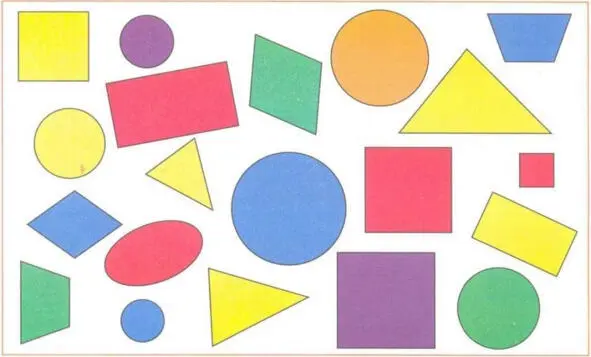
A cat looks for a flat (4)
The lesson 4 begins with repeating the last lesson.
A monkey (a tiger, a lion, a leopard, a crocodile) greet each other and ask:
– Hello. How are you?
– I’m fine, thank you and you?
– I’m fine, thanks. (It takes 10 min.)
We may sing the song «I can see a zebra.» (A hare, a donkey, an
elephant…)
(Вопрос «Кто это?» Who are you? – относится к человеку.
Про игрушечных зверей спрашиваем: What is it? What are they?
Пока знакомимся с игрушками, говорим a bear, a fox… – какой-то медведь, какая-то лиса и т. д. Если указываем на животное, говорим с артиклем The (The frog – эта лягушка). Когда животные становятся персонажами сказок, говорим без артиклей: Bear, Fox…
Учитель показывает маленького котёнка:
– This is a little cat. It’s red. I will ask it,
– Little cat, little cat,
Where is your flat?
– I’m a little cat,
I have no flat.
– What is it? (It is a little cat.) What does the word ’flat’ mean? (It’s a house.) Does the cat have a house? (No, it does not.) Poor thing! You may live with somebody in the Zoo.
– Go to the cage number 1, will you?
– No, I will not. The big gray wolf lives there. I’m afraid of it.
– I see. Go to the cage number 4, will you? What lives there?
– A panther. It is very angry. I’m afraid of it.
– Poor thing. Go to the cage 3 (2, 5, 6, 7, 8, 9 and10). What is here? What does it like? Is it kind or angry? Can it eat the little cat or will love it?
(At last the cat goes to the cage number 10. There is a deer in this cage.)
– What a nice deer! I will live with it. Dear deer, may I live with you? I have no house.
Читать дальшеИнтервал:
Закладка:
